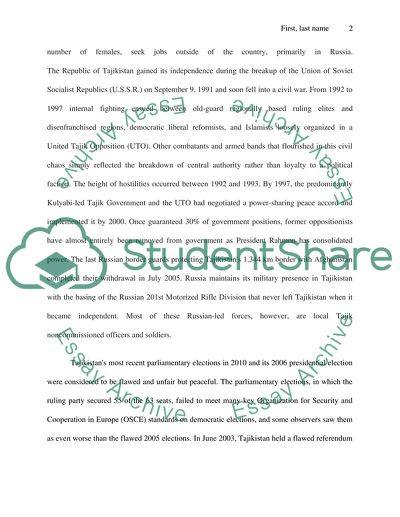Cite this document
(“Tajikistan Civil War Research Paper Example | Topics and Well Written Essays - 3000 words - 1”, n.d.)
Tajikistan Civil War Research Paper Example | Topics and Well Written Essays - 3000 words - 1. Retrieved from https://studentshare.org/history/1750661-tajikistan-civil-war-1992-1997
Tajikistan Civil War Research Paper Example | Topics and Well Written Essays - 3000 words - 1. Retrieved from https://studentshare.org/history/1750661-tajikistan-civil-war-1992-1997
(Tajikistan Civil War Research Paper Example | Topics and Well Written Essays - 3000 Words - 1)
Tajikistan Civil War Research Paper Example | Topics and Well Written Essays - 3000 Words - 1. https://studentshare.org/history/1750661-tajikistan-civil-war-1992-1997.
Tajikistan Civil War Research Paper Example | Topics and Well Written Essays - 3000 Words - 1. https://studentshare.org/history/1750661-tajikistan-civil-war-1992-1997.
“Tajikistan Civil War Research Paper Example | Topics and Well Written Essays - 3000 Words - 1”, n.d. https://studentshare.org/history/1750661-tajikistan-civil-war-1992-1997.


